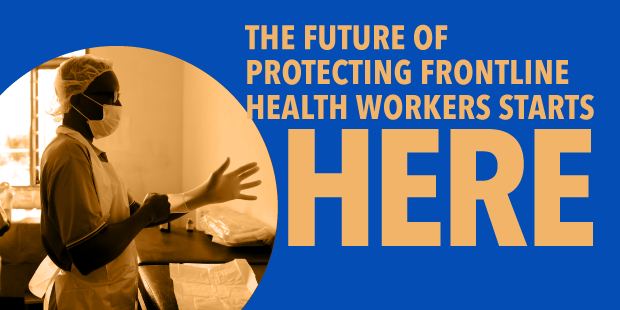Where We Work
See our interactive map


We at IntraHealth International are joining our partners in the Frontline Health Workers Coalition to urge action to protect health workers from on-the-job dangers introduced by the ongoing COVID-19 pandemic.
“Never has there been a more important time to focus on health workers,” said Polly Dunford, IntraHealth’s president and CEO, in Devex last week. “Rarely have they faced such danger on such a massive scale. We have an obligation to keep frontline health workers everywhere safe, including making sure all have the personal protective equipment they need.”
As more health workers get sick, hospitals become shorter-staffed and more overwhelmed.
Worldwide, health workers are facing huge risks as shortages of personal protective equipment (PPE)—along with the longstanding global shortage of health workers—leaves many battling this infectious disease over long shifts and without the proper supplies. As more health workers become sick with—or even die from—coronavirus complications, hospitals become shorter-staffed and more overwhelmed. This leaves communities everywhere more vulnerable to coronavirus as well as everyday health needs, such as services for maternal and child health, HIV, family planning, hypertension, and more.
IntraHealth is calling for urgent action to protect health workers, including to:
IntraHealth serves as the secretariat for the Frontline Health Workers Coalition, an alliance of US-based organizations working together to urge greater and more strategic investments in frontline health workers in low- and middle-income countries as a cost-effective way to save lives and foster a healthier, safer, and more prosperous world.



